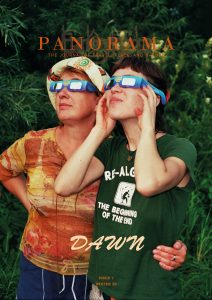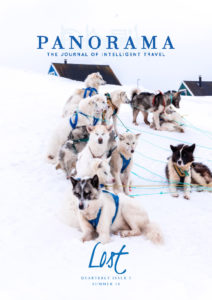Nature has much to say, and on an otherwise still morning in the desert southwest of Utah, a woman, camping alone, hears the valley and its inhabitants—the rocks, flora, and fauna—pleading for their continued existence. The buzzing, biting mosquitoes she has been battling are nothing compared to the peril faced by wild, quiet places shared on social media or exploited for resources. They become no longer wild or quiet. They are silenced.
The Colorado Plateau is known for its triad of flying, buzzing pests: cedar gnats, biting black flies, and mosquitoes. On a recent trip, the mosquitoes were a particularly marked force to reckon with. After returning home, I complained about them to my friend, who told me to “quit whining.” I should just deal with the inevitable challenges of camping. He’s right; I do not have much to complain about. The places I camp — ledges, canyons, mesas, and valleys of southern Utah — have a far greater right and reason to gripe. It is sometimes hard to hear the earth complain; you have to listen carefully.
I usually sleep in the back of my pickup truck when I camp. It has a topper. Before dusk, I drape a mosquito net over the window of the topper and truck gate so that I can feel the cool night-time desert breezes. This way, I can see the stars and the moon as I fall asleep or awaken during the night. I am at that age where I wake up just because I am at that age. Last night, one mosquito made it in side the truck before I put up the netting fortress. This meant that, in addition to my regular, unscheduled wakings, I woke up another half-dozen times as she would randomly hover and buzz over my ear. Your average mosquito tips the scales at only about 2.5 mg. It would take a few hundred to weigh as much as a cotton ball. But it is a known truth that the havoc a creature can make is not proportionate to its weight. Think “coronavirus” or newborn baby. I have a two-month-old kitten — she weighs all of three pounds — and she can mess up my living room with an efficiency that would make any toddler envious.
During the night, I got up a couple of times to see if I could swat her (the buzzing, biting ones are always a “her;” the males are vegetarian), but as soon as I switched on my headlamp, she would go quiet. I could not find her. I pulled a light blanket over my head so she wouldn’t bite me, but that did not dim the infernal buzzing. It would have been helpful if I could have just stopped breathing, since it is my exhaled carbon dioxide and heat that attracted her. This went on all night.
As dawn neared, creeping up and over the east valley wall and the morning began to warm up. I began to feel a little suffocated under the blanket, so I made a small burrow for my face so I could breathe easier. Almost immediately, I heard the little beast buzz around, and then I felt her on my lip. She bit, and my reflexes were never sharper than in that split second. I whacked myself hard on the mouth. As my lip began to swell, I waited…The buzzing had stopped. “Great,” I thought, “I can get a little shut-eye.” I kept the blanket over my head because the morning sun was determined to make it daytime whether I was ready to get up or not. I began to nod off.
It was only minutes later I heard, “Oh my God, this is freaking amazing!”. This was overlapped by, “Wow, this is awesome.” Two dogs began barking excitedly. I slipped my arm out from under the blanket to look at my wristwatch: 6:35 a.m.
I was camped in a spot that is not remote but is usually deserted. Undiscovered still. A quick Google search of this area yields only a few entries, none of which provide glowing descriptions, though there were a few pictures and a complete set of directions on how to get here. Last night I scanned the valley but did not see any lights from random headlamps or campfires piercing the night from any direction. I had the place to myself, or so I thought. I poked my head out the window to find four people and two dogs taking a sunrise hike high on the valley wall above me. They had seated themselves on a few boulders to talk about how amazing this place was while they hollered for their barking dogs to stay close. Jasper and Scone were just as excited, it seemed, to be here as their owners were.
Like the dawn, they were barreling into their day, whether I was ready or not. I gave up trying to go back to sleep and instead made my way out through the mosquito netting and into the morning to put the coffee on. I waved up to them, and they waved back.
This is an “awesome” and “freaking amazing” valley. I do not mind sharing my valley with the hikers, though I wished they had slept in a bit longer. Yes, I do somewhat think of this as “my” valley. I feel possessive and protective toward it in the same way I do toward all the people, animals, plants, rocks, and places I have developed a relationship with. This valley is one of the places in which I often begin and end my trips to the Colorado Plateau. It is quiet; it is not far from the highway. It has become where I get my bearings and shake off the work and worries of the “real world” before setting off on other adventures. Before heading home, it is a place to “rinse off” the backcountry and slowly reintegrate into the world only miles away. Here in the quiet, I have the opportunity to listen, watch, and feel the desert unfold itself from the darkness to dawn, to morning, to afternoon, and back to dusk. To me, seeing nature is not the same as experiencing nature. And, for me, I experience nature where there is quiet. In our modern world, quiet places almost feel sacred, divine. In quiet places, serenity drapes itself over me like a warm, comforting blanket.
When it is quiet, I like to listen to and watch the ravens start the day. They talk to each other before leaving their roost. They speak in companionable tones with auks and coos, gurgles, and clicks. It sounds like, “I’m heading out, dear… you coming?” She replies, “No, not yet, I’m not quite awake, and this place is a mess. I’ll meet you later.” Then I see him soar over me as I sit in my low camp chair sipping coffee. I watch him land on a small hillock looking for insects and then fly over to a boulder where he sits as still as a statue. In the quiet, junipers and cliffroses on the valley walls are each, in turn, lit up by the rising sun. On a morning like this, their thoughts, their very essence, drift into the still air like scents or seeds. Soft breezes pick them up and carry them to me. I listen.
These “awesome” rocks have lined this valley for some 250 million years. .. they have seen a lot. They possess wisdom and beauty; the earth’s history is written in their bones. We are part of earth, so it is our history too. But, like most old and wizened souls, they speak softly, barely in a whisper. They are not mute. I only hear them in the quiet.
The flora on the valley floor has been forever changed after more than a century of cattle ranching. This spot was once covered with its birthright, the Colorado Plateau’s other triad — juniper, pinyon pine, and sagebrush. Wildflowers, like delicate bridal white sego and sand lilies, red Indian paintbrush, and bright orange desert globe mallows, tucked themselves amid the green foliage and red sand. Now, Russian thistle covers nearly the entire valley floor. This invasive plant has thrived in the disturbed soil and crowded out the native flora. In the spring, cows graze on the pretty, tender purple stems — before the plant turns into ugly, prickly, brown tumbleweed. More than once, I have woken to an entire herd of cows grazing and mooing around my campsite. Cryptobiotic soil, wildflowers, cliffroses, pinyon, juniper, and sagebrush still cover the jumbled valley walls where the cattle don’t hang out.
Dogs (and many people) do not know how fragile the ecosystem is on these rocky valley walls. I know that dogs are like part of the family for most, but they are especially a disturbance. When trampled on, the cryptobiotic soil that holds nutrients takes between 10 and 50 years to recover. The few animals that still call this place home will not tolerate frequent disturbances. Though Jasper and Scone are probably great dogs, the coyote that trotted past my campsite along the axis of the valley yesterday morning will certainly not make an appearance this morning. The graceful and beautiful antelope harem will most likely remain on the other end of the valley to browse under the watchful eye of the dominant male charged with their safety. By excitedly hollering at each other and bringing along their jubilant, barking dogs, I believe these sunrise hikers forfeit the opportunity to see the raven pair roosting just a few feet below them.
My earnest and passionate hope is that people who come here to see and admire this valley will also listen. In listening, I hope they will feel a nudge to protect it simply because it exists. I am aware that others have different feelings than I do. They may think that drawing admirers will bring adventurers who will protect it because of the valley’s usefulness as a place to bike, hike, climb, bungee jump, or go off-roading. I want to scribble a note, clamber up over the tumbled rocks to these sunrise hikers, and hand it to them. It would say to them, plead with them, not to post glowing descriptions, pictures, and GPS coordinates on their Instagram feed or their travel blog. I would implore them to, instead, share this special place only with a trusted friend, a friend with whom you would entrust the care of your dogs or your kids. This valley is that special.
It is in places like this where we can feel and hear messages and stories, much like I imagine the elders, the Ancient Puebloans and the Native Americans did. That morning, the voices of the cliffs were urgent. We need to stop the madness, they say, “I came, I saw, I bought souvenirs” is crazy; it is unhealthy for all of us. In the 1970s, this place was slated to become a nuclear waste dump. For years, geologists poked and prodded at the innards of this valley to see if it would be a suitable depository. I do not know all the criteria by which it failed, but the valley was spared, in part, because the potential to plunder the sediments for oil, gas, potash, coal, copper, and gold had not yet been quantified. Indeed, wildcatters have been probing the valley depths for years. So far, the valley has yielded little worth developing. Lots of dry wells. I feel the valley walls, their Mesozoic heart, beat with relief. We were saved then, they whisper, please save us from tomorrow. They fear, like me, that the rutted mud and sand road that traverses the axis of this valley will be paved with asphalt. Kiosks for collecting fees will be installed. Campsites will be built long and wide to accommodate RVs and trailers hauling off-road vehicles. Dogs will bark, and children will shun the tumbled rocks for monkey bars set up near bathrooms with flush toilets. Barbecue grills and Wi-Fi antennae will dot the red sand.
The area will be regularly sprayed with a pyrethrum and piperonyl butoxide mixture to control the mosquitoes. The ravens will find another roost; the coyote will move her pups to another valley. No one will be able to hear what the valley walls, junipers, or cliffroses have to say on a quiet, beautiful morning while bleary-eyed, sipping coffee, and swatting mosquitoes.











